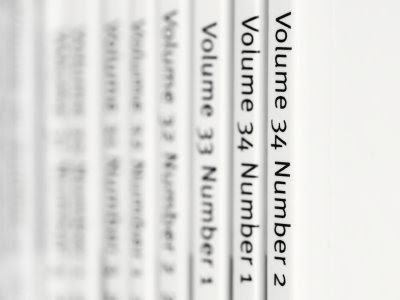Imagine you are standing in a group at a cocktail party discussing the latest thriller from Dan Brown, author of The Da Vinci Code.
One of your companions remarks:
“I loved The Da Vinci Code, but I was so disappointed by Brown’s most recent book The Lost Symbol. The writing was poor, the story was unbelievable even by the standards of blockbuster thrillers, and I found myself not caring about the outcome.”
And you reply:
“But it is an intelligent, lightning-paced story with surprises at every turn–Brown’s most exciting novel yet.”
Several people express surprise, and one ventures to ask if you read the same book he did. You reply, truthfully, that you never read the book at all. You know that it is lightning-paced, that there are surprises at every turn and that it is Brown’s most exciting novel yet because that’s what it says on the back of the book jacket.
Everyone laughs because you’d have to be a fool to think that reading the blurbs on the book jacket is equivalent to reading a book. The blurbs are written by the author and the publisher in an attempt to get people to buy the book; they represent the hope of how people will feel after reading the book, not the reality of how people really do feel after they’ve read the book.
The same principle applies to scientific papers. There is no substitute or shortcut for reading the paper itself. The abstract may or may not be an accurate assessment of what the data in the paper actual shows. The abstract is the equivalent of a blurb. It is written by the authors themselves and represents the hope of what other scientists will think once they’ve read the paper, NOT the reality of what scientists really think about the quality of the paper, the reliability of the evidence and whether the evidence supports the conclusions.
That’s why natural childbirth and homebirth advocates need to understand they aren’t accomplishing anything by quoting an abstract of a paper as “proof” of a claim, beyond marking themselves as ignorant of the way that science works.
Homebirth advocates regularly parachute in to the blog to “inform” me of the findings of Johnson and Daviss’ 2005 paper in the British Medical Journal purporting to show that homebirth with a CPM (certified professional midwife, a non-nurse midwife) is safe are making the same impression of the guy at the cocktail party who declares that he knows Dan Brown’s newest book is terrific because that’s what it says on the back.
There’s a reason why scientific journals publish entire papers, not just abstracts and that reason goes to the heart of what a scientific paper is. The publication of a scientific paper is not the end of the discussion; it is merely the beginning. Just because a paper is published in a peer reviewed scientific journal does NOT mean that the paper is true. It merely means that the authors’ data and conclusions are worthy of being included in the discussion. The entire paper is presented for the specific purpose of allowing the readers who have appropriate background and knowledge of statistics to decide for themselves whether the authors’ claims are true.
Consider the Johnson and Daviss paper. The abstract claims that the authors’ demonstrated that homebirth with a CPM in 2000 was as safe as hospital birth. To do that, though, the authors would need to compare the death rate at homebirth in 2000 with the death rate for low risk hospital birth in 2000. When you read the actual paper, you find that the authors did nothing of the kind. They compared homebirth with a CPM in 2000 to a bunch of out of date papers about hospital birth extending back to 1969. So not only did the authors fail to supply data that proved their claim, the only way they could make homebirth death rates look acceptable was to compare them with hospital death rates from decades before when the overall death rate was much higher.
I know that most lay people do not understand that quoting the abstract of a paper you have not read is the equivalent of quoting the blurbs on a book jacket to support your claim that the book is excellent. Professional homebirth advocates play off that lack of understanding to fool women into believing that abstracts show that homebirth is safe. In other words, they trade on their target audience’s gullibility and lack of knowledge of science and statistics to persuade them that “studies show” that homebirth is safe and that obstetricians do not practice “evidence based medicine.”
That’s why I offer this simple rule:
Quoting a scientific abstract of a paper you have not read is not proof of anything other than the fact that you don’t understand science. If you wish to be taken seriously in any debate about homebirth, you MUST read, understand and analyze the paper itself. Anything else is the equivalent of claiming that a book is great because that’s what it says on the cover.


